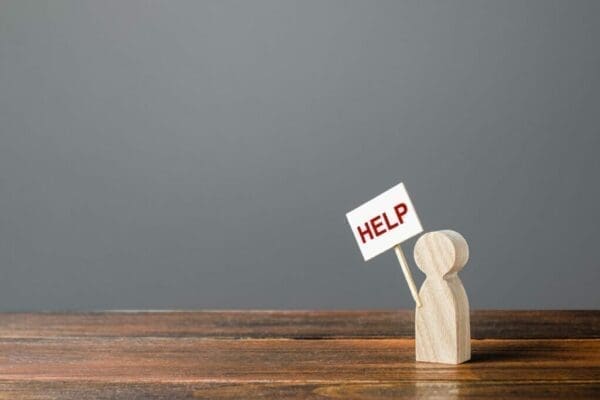Techniques to Support You During Challenging Times
Ever had the experience where you felt you were running on empty and still pressing ahead anyway? Some people may consider this is how to demonstrate resilience. And to some extent it is.
Resilience though isn’t just about seeing how long you can go and `tough’ things out, without regard to what it might be doing to you emotionally and physically. When you think about it, even an elastic band has its breaking point. True acts of resilience centre too on a level of introspection, compassion and being pre-emptive.
The British Psychological Society defines resilience as:
‘Broadly when we talk about resilience, we’re talking about someone ‘bouncing back’ after experiencing adversity or challenging circumstances.’
Additionally, the American Psychological Association states:
‘Psychologists define resilience as the process of adapting well in the face of adversity, trauma, tragedy, threats, or significant sources of stress—such as family and relationship problems, serious health problems, or workplace and financial stressors. As much as resilience involves “bouncing back” from these difficult experiences, it can also involve profound personal growth.’
To get ahead of feeling burnt out and having the need to bounce back, you could ask yourself these core questions. How am I feeling right now? What help do I need? Who or what can support me? If I changed my behaviour or my thinking right now, how could that usefully take me forward? That is to say, the answers to these key questions will help to aid your resilience.
So, what does this mean? Importantly, before you work yourself physically, psychologically and emotionally into a burnout phase, you want to have a level of awareness about how you are feeling about life generally. Certainly, taking the following seven pre-emptive actions could help you stay ahead of the burnout curve.
Practical Resilience Tools and Techniques
1. Self-Care and Compassion
What do you do currently to care and show compassion to yourself? This is a really important question and not as some might think, an act of selfishness. Think about it this way, if you are not operating optimally, how can you step in and support friends and family as well as add value to your colleagues at work?

It’s absolutely perfectly fine to take some time for you. Here are some examples of what others have done and you might consider doing too. Take a nice luxurious bath, scented with essential oils or bubble bath. Burn a nice candle. Write a gratitude journal; go for a walk; sit and close your eyes for a few minutes (meditate).
What will you choose to do, just for you?
2. Connection
Where you can and it’s safe to do so, be sure to connect with people. This may be face to face, maintaining safety guidelines or virtually.
Maintaining connection is really important for our emotional well-being. When was the last time you connected with someone you haven’t seen or spoken to in a while? Who else do you want to connect with that you’ve been out of touch with? When will you do it? In other words, we know, don’t we, if we don’t programme things in our calendar, sometimes it gets lost and we forget to do it. There is no time like the present (or at least in the very near future).
3. Get Comfortable with Saying ‘No’
Many years ago, I read a book entitled, When I say no, I feel guilty by Manuel J Smith. This book was really important to me at the time because I felt I didn’t know how to say no. I was heading toward complete exhaustion. At that time, being resilient to me, meant that I said yes to everything that was being asked of me. I felt I had to demonstrate I was superwoman and could do everything asked of me. My reputation was of someone that was highly capable and for getting things done.
I got to a point where there were diminishing returns. I was missing timelines, started to feel listless and quite unhappy. It became clear that I really needed to take action to turn things around. I’ve learned over the years, the importance of saying no, recognising it as an act of self-love.
Saying `no’ (as appropriate) is a real gift you can give yourself. It demonstrates resilience by recognising when enough is enough. It’s an act of self-compassion. You can then, truly be available for yourself and others in a healthy way.

Here are some questions to help you to figure out whether you want to say `no` (or yes) in any given situation. Am I the only person who can do this? Who else can step in? What are the consequences for my saying no? What are the consequences for my saying ‘yes’? Is this a situation where I can say `no’, for right now and offer another timeframe?
It’s also ok to say `no’, just because you want to (naturally you will want to take the circumstances into account).
4. Power Nap Time
There are so many wonderful benefits to having a power nap (10-20 minutes during the day), where you get to close your eyes and sleep (set your alarm if you need to). This is even more important when you feel you are in high-stress situations, such as in your job or home life. It’s a false economy to feel you can’t afford to take time out at the height of your busyness. The last thing you want to do is crash and burn.
Here is what Sleep Foundation say are some of the benefits of a power nap. Reduces sleepiness; improves learning; aids memory formation and regulates emotion. If you’ve never tried power napping, it’s worth testing it, to see what benefits it brings you in the various aspects of your life.
5. Ask for Help
We all need help sometimes. It’s ok to ask because you deserve it. When was the last time you asked for help? There are so many areas in life in which we could ask for help, for example, home (children, housework, shopping, cooking, laundry etc) and work (understanding software, the volume of work, building and sustaining relationships). Asking for help is an act of kindness for self.

6. Focus on What You Can Control
When focusing on being resilient, it’s important to understand what is in your control and what isn’t. Focus on the things that are in your control and seek to build on and expand those areas. Stephen Covey in his book, 7 Habits of Highly Effective People, talks about this concept as the Circle of Influence and the Circle of Concern. He suggests giving attention to things you can influence and watch your influence grow, rather than focus on the `circle of concern’, the things you can’t control. The way I have expressed this over the years is to identify and understand the `problem’ and rehearse the solutions. To this end, the vast percentage of your focus will be on identifying solutions.
7. Give Yourself Permission
Give yourself permission just to do what you want to do. The world won’t end.
Conclusion
There are any number of approaches you can take to be resilient. It’s best to be pre-emptive and not wait until you are at breaking point. You have a choice of so many wonderful things you can do to maintain your level of resilience. Choose some of your favourites and build them into your life on a regular basis.
All the best.
For more useful resilience resources take a look at Go Mind in Motion or explore their Facebook Group.




